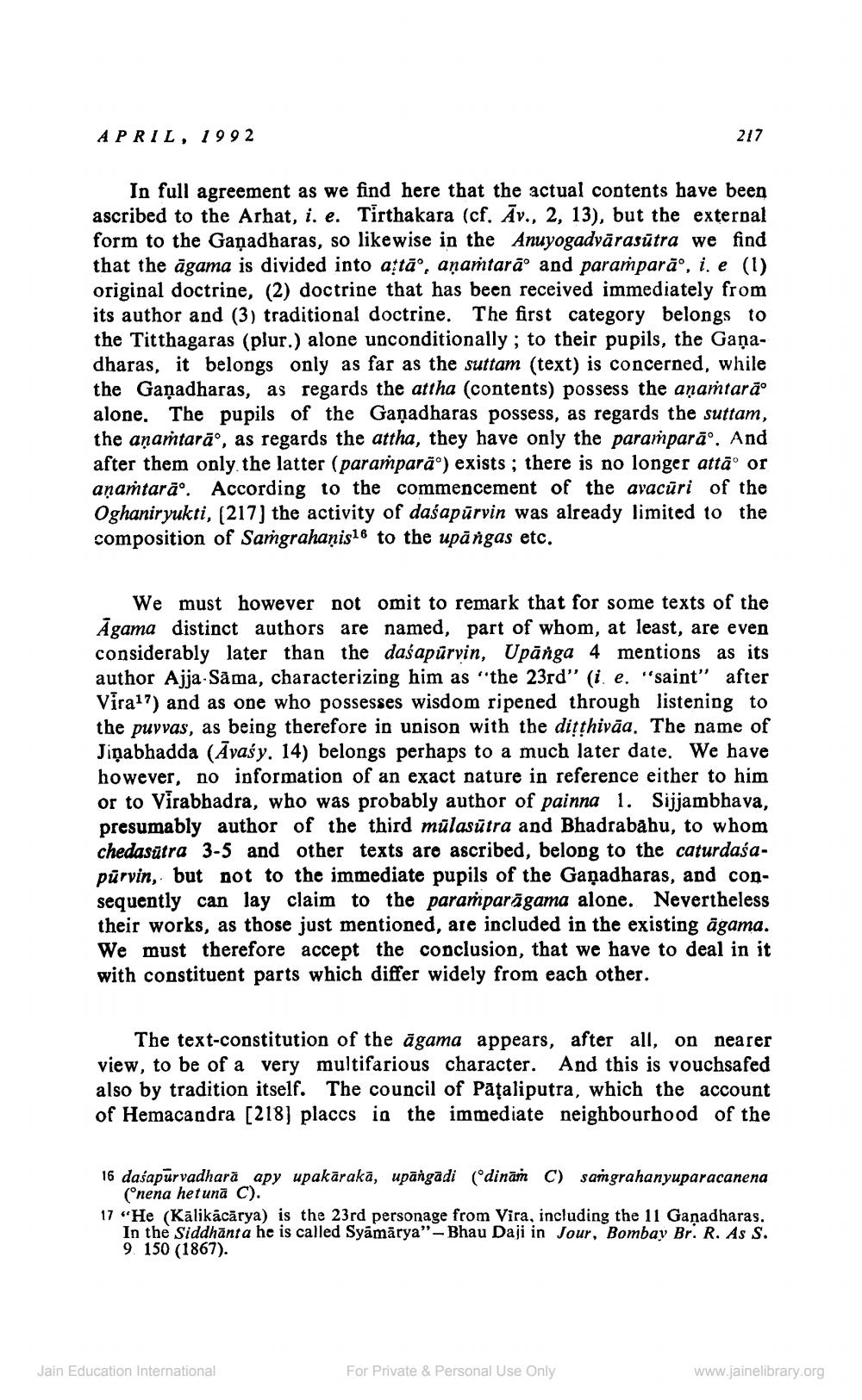________________
APRIL, 1992
In full agreement as we find here that the actual contents have been ascribed to the Arhat, i. e. Tirthakara (cf. Av., 2, 13), but the external form to the Gaṇadharas, so likewise in the Anuyogadvārasūtra we find that the agama is divided into aṭtā°, aṇamtara° and parampară, i. e (1) original doctrine, (2) doctrine that has been received immediately from its author and (3) traditional doctrine. The first category belongs to the Titthagaras (plur.) alone unconditionally; to their pupils, the Gaṇadharas, it belongs only as far as the suttam (text) is concerned, while the Gaṇadharas, as regards the attha (contents) possess the anamtara alone. The pupils of the Gaṇadharas possess, as regards the suttam, the aṇamtara, as regards the attha, they have only the paramparā°. And after them only the latter (parampara°) exists; there is no longer atta° or aṇamtara. According to the commencement of the avacuri of the Oghaniryukti, [217] the activity of dasapurvin was already limited to the composition of Samgrahanis16 to the upangas etc.
217
We must however not omit to remark that for some texts of the Agama distinct authors are named, part of whom, at least, are even considerably later than the daśapurvin, Upanga 4 mentions as its author Ajja Sama, characterizing him as "the 23rd" (i. e. "saint" after Vira17) and as one who possesses wisdom ripened through listening to the puvvas, as being therefore in unison with the diṭṭhivaa. The name of Jinabhadda (Avaśy. 14) belongs perhaps to a much later date. We have however, no information of an exact nature in reference either to him or to Virabhadra, who was probably author of painna 1. Sijjambhava, presumably author of the third mülasūtra and Bhadrabahu, to whom chedasutra 3-5 and other texts are ascribed, belong to the caturdaśapurvin, but not to the immediate pupils of the Ganadharas, and consequently can lay claim to the paramparāgama alone. Nevertheless their works, as those just mentioned, are included in the existing agama. We must therefore accept the conclusion, that we have to deal in it with constituent parts which differ widely from each other.
nearer
The text-constitution of the agama appears, after all, on view, to be of a very multifarious character. And this is vouchsafed also by tradition itself. The council of Pațaliputra, which the account of Hemacandra [218] places in the immediate neighbourhood of the
16 dasapurvadhara_apy upakārakā, upāngādi (dinam C) samgrahanyuparacanena (nena hetuna C).
17 "He (Kālikācārya) is the 23rd personage from Vira, including the 11 Gaṇadharas. In the Siddhanta he is called Syāmārya" - Bhau Daji in Jour, Bombay Br. R. As S. 9. 150 (1867).
Jain Education International
For Private & Personal Use Only
www.jainelibrary.org




